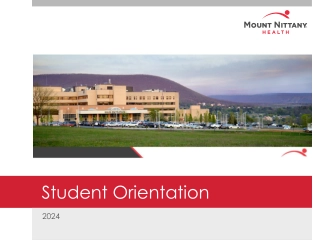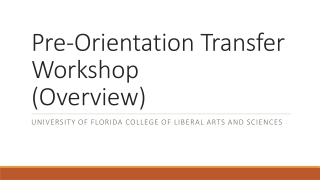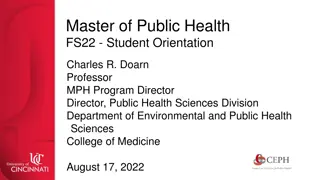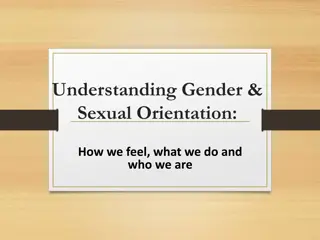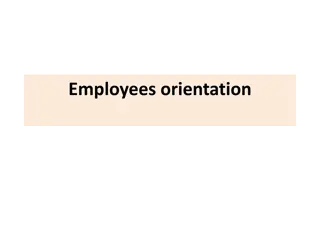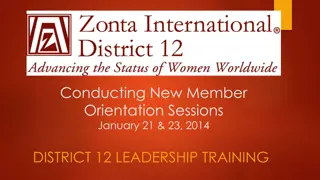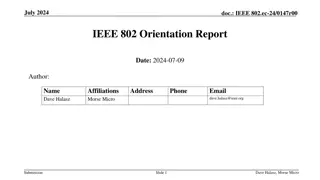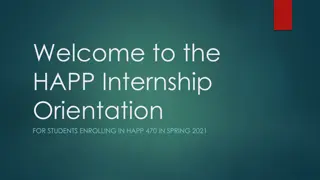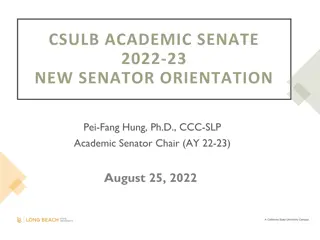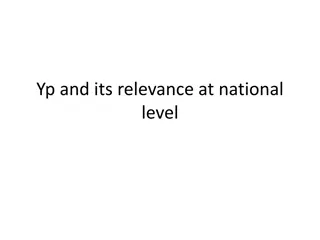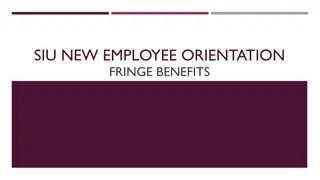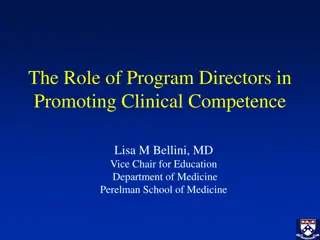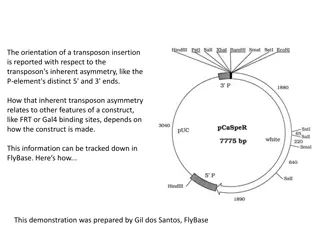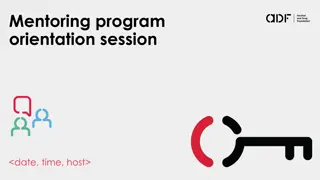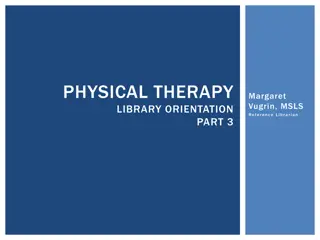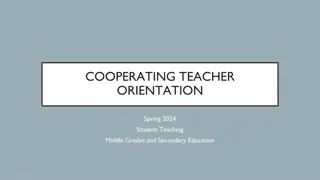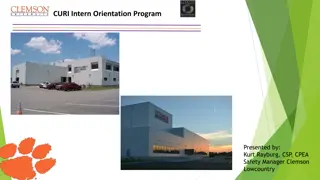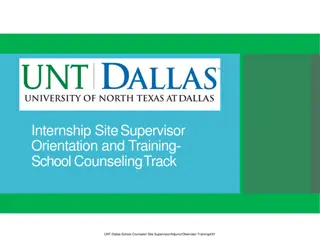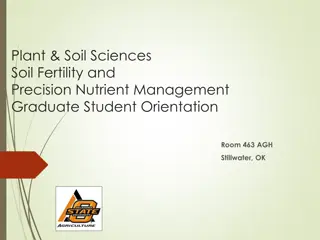Orientation to CBME Program
This content provides insight into Competency-based Medical Education (CBME), covering topics such as what CBME is, why it is implemented, curriculum details, assessment methods, progression, and success strategies. It delves into the core concepts of CBME, highlighting the shift towards competency achievement and formative feedback. The material explores the evolution of education over the past 100 years, emphasizing the move towards proving competence and focusing on patient outcomes and individualized training. Additionally, it discusses the benefits of CBME, including increased supervision, assessment, flexibility, coaching, and real-life observations. The curriculum structure, EPAs, milestones, and specialized training stages are also outlined for better understanding.
Uploaded on Mar 06, 2025 | 0 Views
Download Presentation

Please find below an Image/Link to download the presentation.
The content on the website is provided AS IS for your information and personal use only. It may not be sold, licensed, or shared on other websites without obtaining consent from the author.If you encounter any issues during the download, it is possible that the publisher has removed the file from their server.
You are allowed to download the files provided on this website for personal or commercial use, subject to the condition that they are used lawfully. All files are the property of their respective owners.
The content on the website is provided AS IS for your information and personal use only. It may not be sold, licensed, or shared on other websites without obtaining consent from the author.
E N D
Presentation Transcript
Orientation to CBME: Program Name INSERT PRESENTER NAME
Topics What is CBME? Why are we implementing it? What does the curriculum look like? How will I be assessed? How will I progress? How can I succeed?
What is CBME? Competency-based Medical Education Focus on achievement of competencies Focus on formative feedback CBME vs CBD
Why CBME? Past 100 years # years X # cases = assume competence CBME Socially accountable education = prove competence 1. focus education on patient outcomes 2. emphasize learner abilities 3. de-emphasize time-based learning 4. increase individualized training
Why CBME? Increased supervision, formative assessment, and mentorship from faculty supervisors Increased flexibility to pursue enrichment opportunities Increased focus on coaching and feedback Increased observations in real life situations, directly or indirectly
What does the curriculum look like? National specialty committee EPAs and Milestones Four stages of training
T2D EPA #1: Performing initial assessments for uncomplicated obstetric patients
ObsGyn EPAs Foundations of Discipline: 10 EPAs + 1 SA FND EPA #1 Performing routine prenatal care to a low-risk, healthy population FND SA #1 Performing critical appraisal of health literature and initiating scholarly projects
ObsGyn EPAs Core of Discipline: 19 EPAs CORE EPA #1 Providing preconception and antenatal care to women with high risk pregnancies
ObsGyn EPAs Transition to Practice: 2 EPAs + 2 SAs T2P EPA #1 Managing complex patients, including those requiring longitudinal care T2P SA #1 Conducting scholarly work
But EPAs arent everything! Non-EPA Assessments Include list of other forms of assessment that will continue to be used by your program. + EXAMS
Obstetrics & Gynecology: Transition to Discipline EPA #1 Performing initial assessments for uncomplicated obstetric patients Key Features: This EPA includes assessment, documentation, and case presentation, including a basic differential diagnosis and initial investigation of uncomplicated obstetric patients This EPA must be observed in a clinical setting Assessment Plan: Collect 3 observations of achievement At least 1 antepartum patient At least 1 intrapartum patient At least 2 observations by faculty At least 3 different observers
The Entrustment Scale 1 2 3 4 5 I had to do I had to talk them through I had to prompt them from time to time I needed to be there in the room just in case I did not need to be there
How will I progress? Competence Committee Holistic progression decisions based on all available assessment evidence Collective judgement used to decide if enough evidence exists to promote the trainee EPA assessments and other assessments Focus on progression and growth rather than specific scores
Tips for CBME success! Be proactive Become familiar with your EPAs Anticipate opportunities Ask for assessment before the encounter
Tips for CBME success! Be organized Record previous and pending EPAs Send professional reminders for pending assessments
Tips for CBME success! Be collegial CBME is continually developing everybody is in this together!
Tips for CBME success! Be responsive Respond in a timely manner to your Academic Advisor or Program Director if approached to discuss ongoing progress
Tips for CBME success! Be open to feedback Learn to separate constructive criticism from your sense of self Don t be surprised or disappointed to be told you need to work on certain things Ask for feedback make it a regular part of interactions with faculty. Feedback helps you improve! Take time to reflect on the feedback you receive


